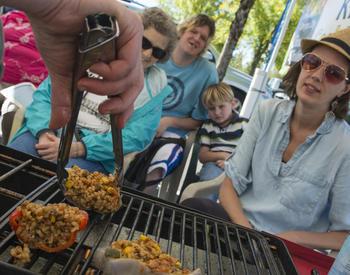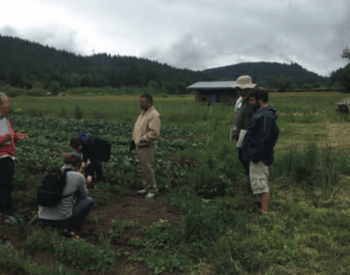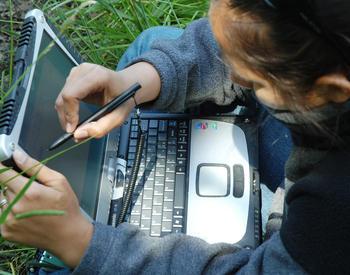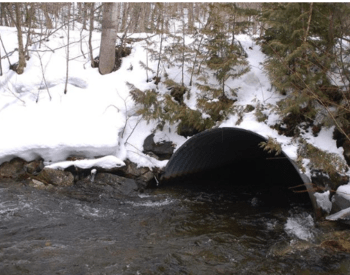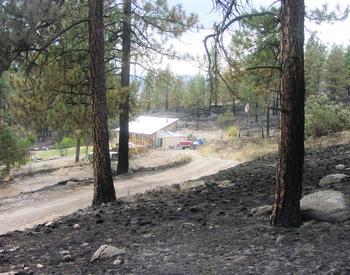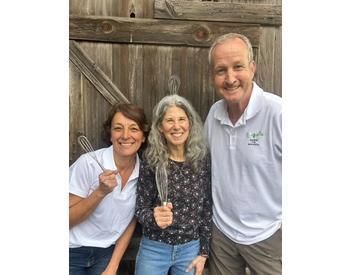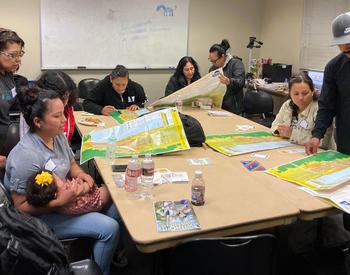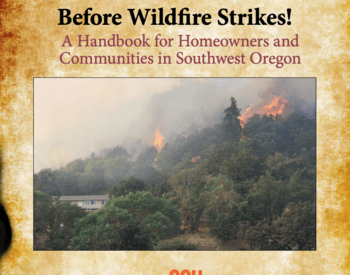THE DALLES, Ore. – The wildfire smoke that blanketed the Columbia River Gorge in September 2020 briefly created some of the most hazardous air quality levels in the United States – and prompted a response from Oregon State University Extension to prepare for extreme smoke events to protect human health.
OSU Extension will use three grants to work with local governments and agencies to implement measures that will help people get ready for these smoke events. The work will be performed in Wasco and Hood River counties and include:
- $106,000 from the Oregon Department of Environmental Quality (DEQ) to research and put into practice alternatives to burning and smoke mitigation strategies.
- $80,000 from Oregon DEQ to produce a regional community response plan for smoke.
- $10,000 from the Oregon Health and Science University Knight Cancer Institute to purchase, install and maintain 10 new smoke monitors for the region.
The biggest health threat from smoke is from microscopic particles that can penetrate deep into the lungs, according to the U.S. Environmental Protection Agency. These fine particles can cause a range of health problems, from burning eyes and a runny nose to aggravated chronic heart and lung diseases.
After the smoke finally cleared 18 months ago, OSU Extension’s Lauren Kraemer talked to her Extension colleagues in agriculture and forestry. “Everybody was interested on doing more to monitor and mitigate smoke,” she said.
Smoke has been an issue in the Gorge for several years, said Kraemer, an associate professor of practice and faculty member in the Extension Family and Community Health Program in the College of Health. Smoke tends to linger in area within the Columbia River Gorge Scenic Area, which has unique geographic features and weather patterns that make it one of the state’s lawfully designated Smoke Sensitive Receptor Areas. It’s not just wildfires that generate smoke in the area.
“All of the region’s orchard waste historically has been burned,” Kraemer said. “When that type of wood burns it can release the chemicals that have been sprayed on the trees. We also have public and private forestland that gets thinned or cleared, and the slash gets burned. Most of our counties are rural and there aren’t regulations on wood stoves. It turns out we have year-round smoke.”
There were only two smoke monitors in the region at the time of the Labor Day fires. The monitors, which are about the size of a coffee mug, attach to the outside of a building and generally require power and wireless internet.
“A lot of our towns were relying on monitors that were 20 miles away,” Kraemer said.
The new monitors will be installed to support ag workers and for the general public. That’s the first phase of the grant-funded work. They will integrate with community alert systems.
The next phase will be to develop a regional community response plan. On March 2, Wasco County Board of Commissioners approved an intergovernmental agreement with Extension to develop the plan. The process is expected to take about a year and will include “table-top exercises” that require working through the plan during a simulated extreme smoke incident.
“I’m excited to bring partners from across the region to develop this plan,” Kraemer said “We’ll be developing this to outline how we communicate to the public but also who pushes send on a warning or an alert. It’s down to that level.”
The final piece of Extension’s smoke response is research. Ashley Thompson, an assistant professor and Extension horticulturist in the College of Agricultural Sciences, will work with the fruit tree industry on finding alternative ways to remove orchard waste, such as chipping pruned limbs or using air-curtain incinerators to create biochar instead of burning the waste in large piles.
All of this work will result in better smoke monitoring, better communication and reduced levels of smoke in the air, Kraemer said.
“We are well on our way,” she said.
